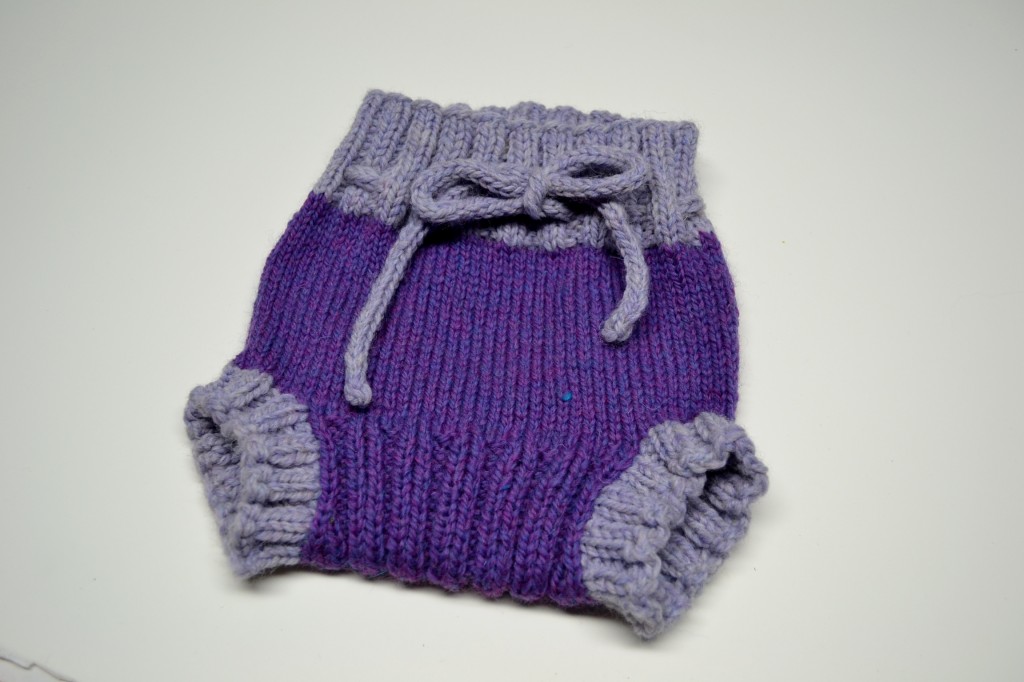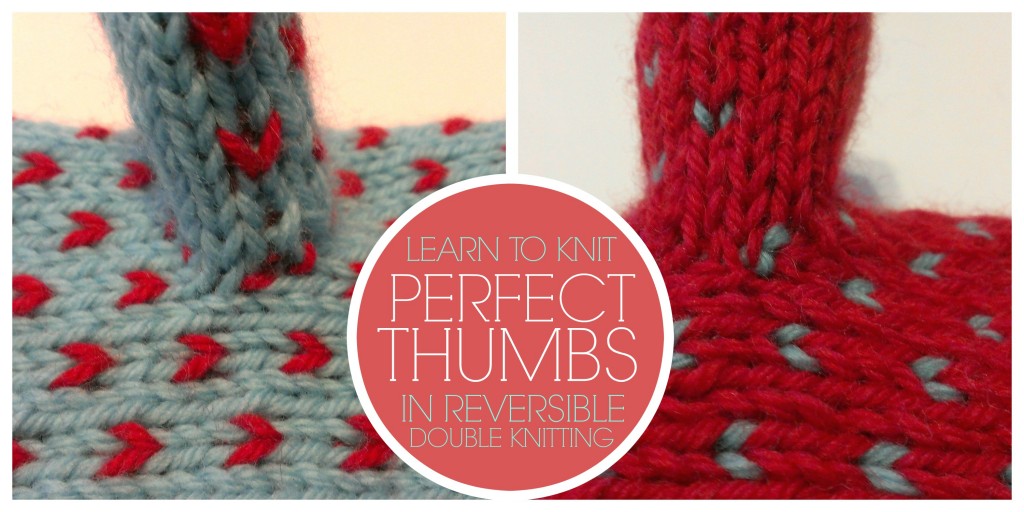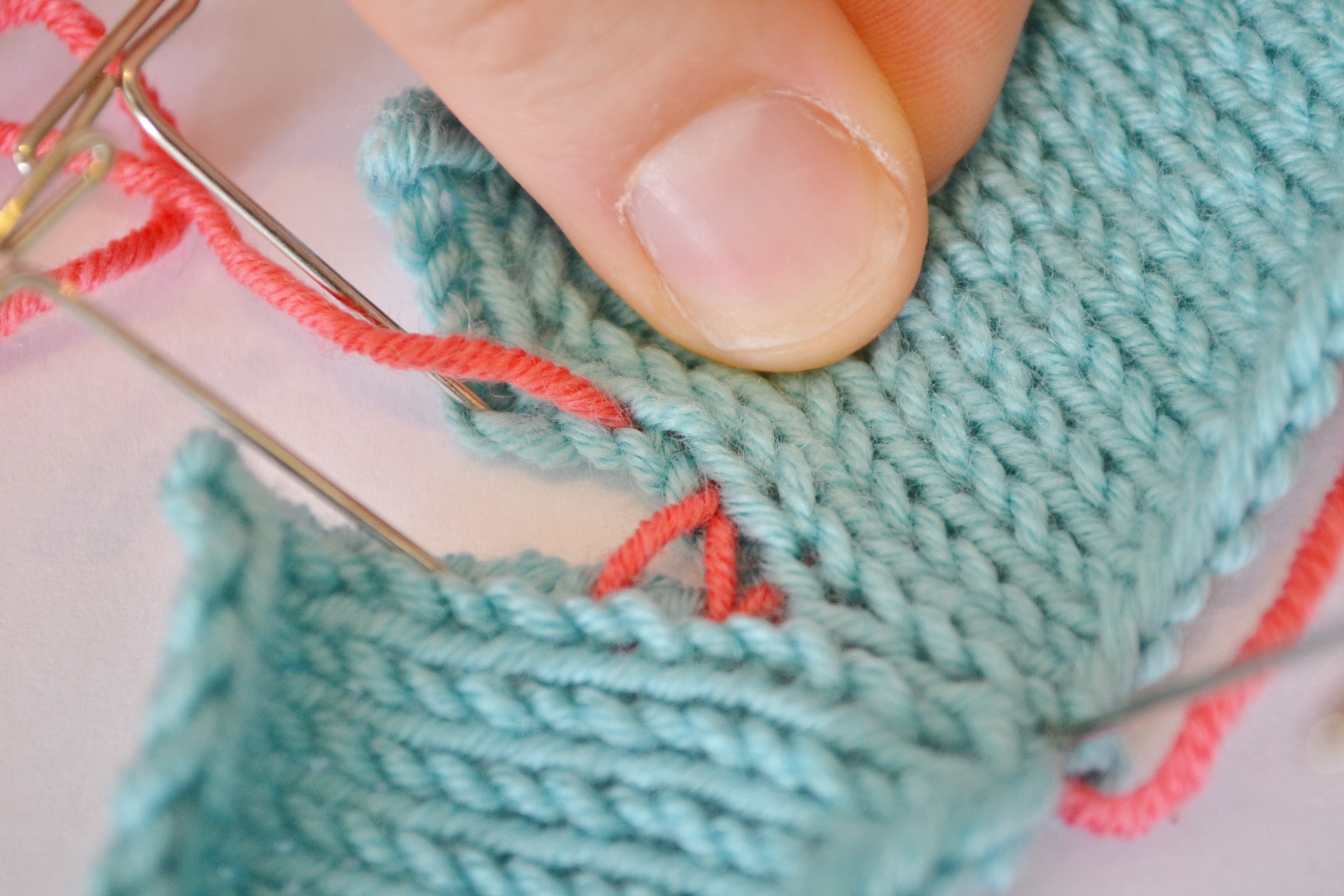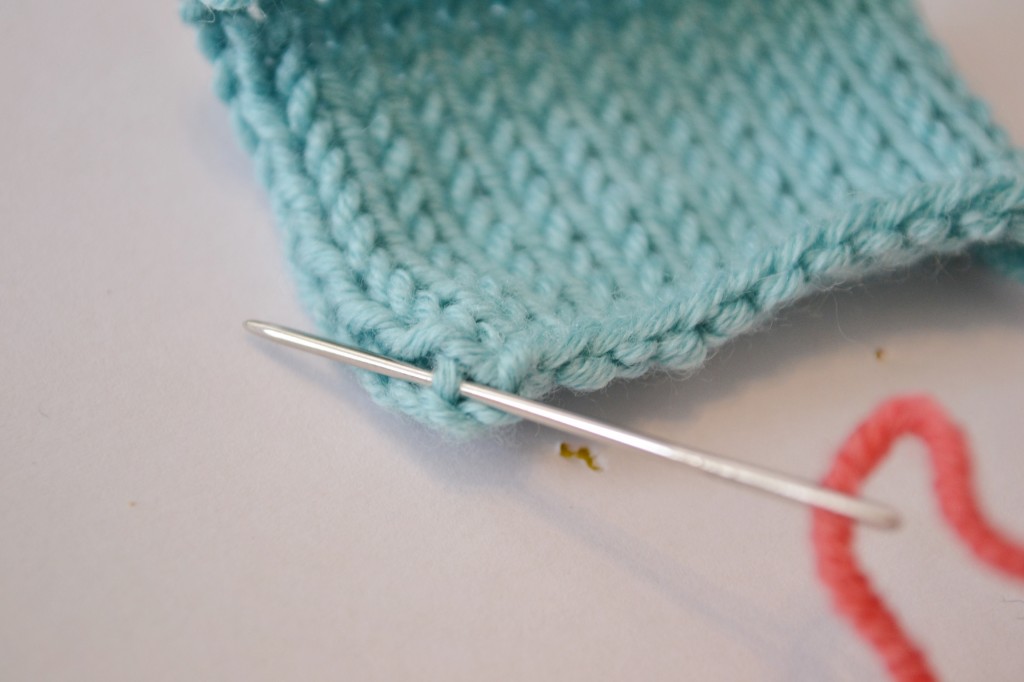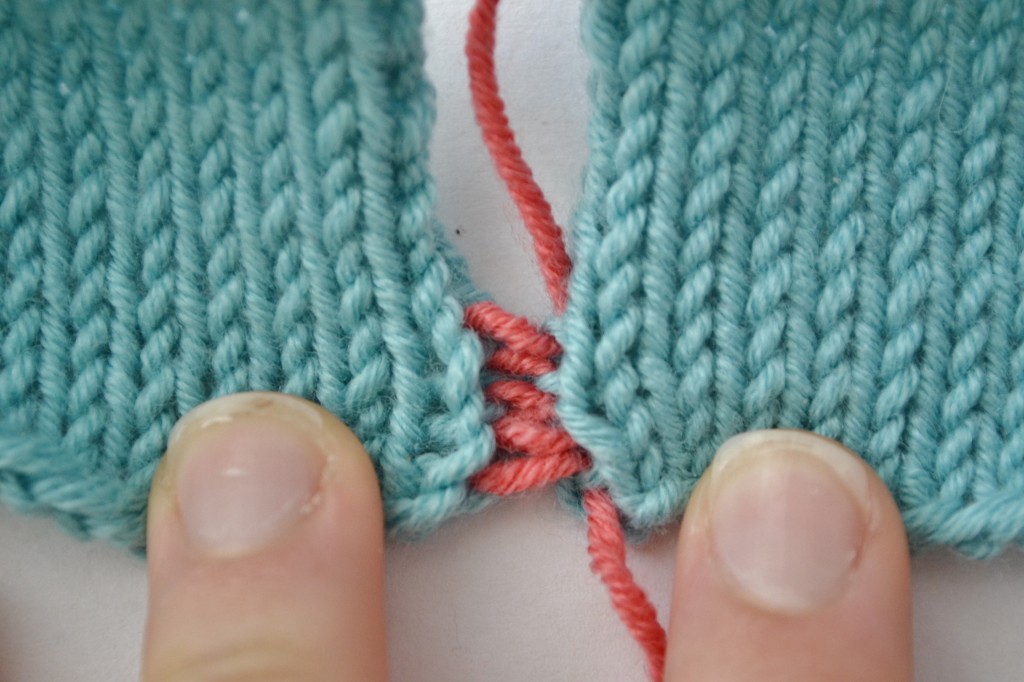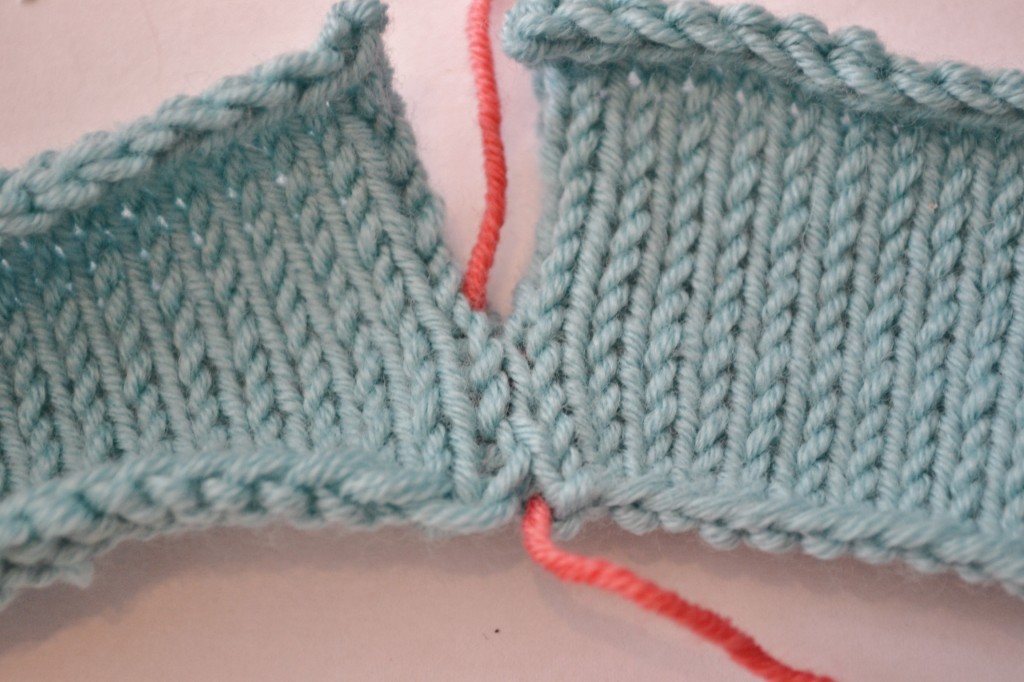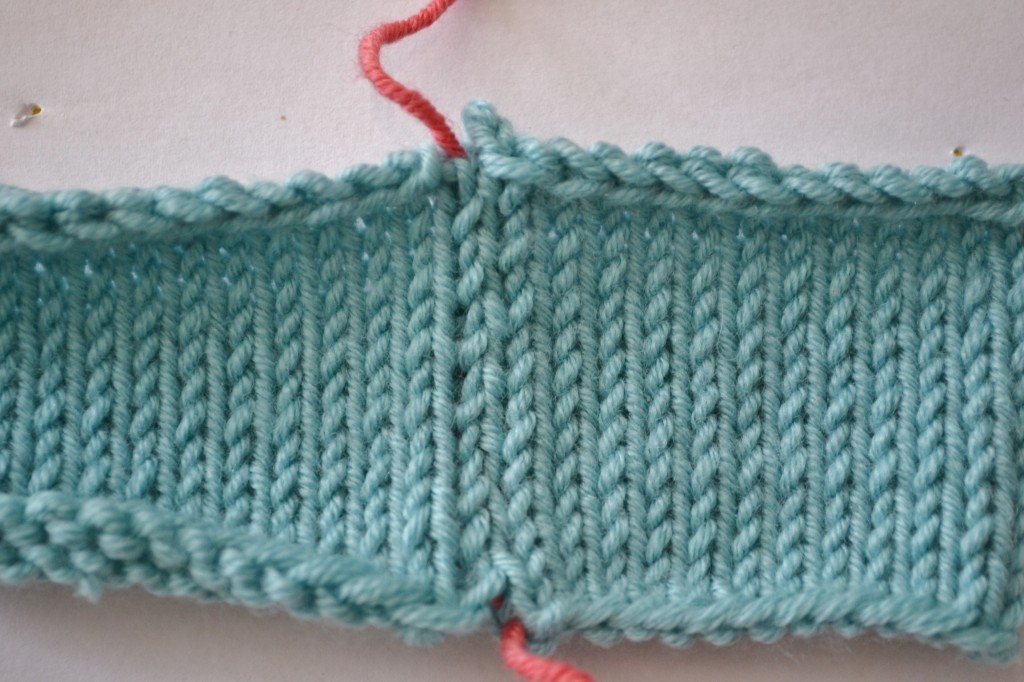
Do you ever get grooves between your purl rows? Or find big, oversized knit stitches randomly scattered throughout your stockinette?
Most of us have knit stockinette stitch and been disappointed when it didn’t look perfectly smooth. On the right side, it looks like every other row of knit stitches is oversized. On the wrong side, there are grooves between the rows. Oh no!
There’s a simple explanation: most of us purl more loosely than we knit.
The way to fix it is a little more complex. Sometimes, just knowing what you’re doing can be enough to make it change. Concentrate on keeping your tension tighter on the purl rows. (If you knit with the yarn in your left hand, loose purls are more likely to happen to you.)
Ways to tighten up those purls
- Some knitters find that wrapping the yarn under the needle (instead of over the top of the needle) when purling tightens the stitches up. What’s actually happening is that because the yarn is wrapping with less distance, the bagginess of the stitches disappears. Good, right? Yup, totally fine. But just watch out if you do this because wrapping the yarn the opposite direction means that now all your stitches are mounted backwards. So, on the knit row, you’ll have to knit into the backs of the stitches to straighten them up. Otherwise, you’ll end up with every other row of stitches being twisted.
- Try purling with the other hand. It’ll feel incredibly awkward at first, but it could work. (I first learned to knit as a “thrower” with my right hand, and my purl tension was perfect. Now that I mostly knit continental with my left hand, I have to really tighten up my purls, and they still don’t look quite right half the time. I’m tempted to switch back to the English method just for flat stockinette projects.)
- Purl onto a smaller needle. You’d have to switch needle sizes for every row, but it might make all the difference.
- Knit looser and purl the same.
- If you just can’t knit looser, or you’re concentrating so hard on tightening your purls that now your purls are too tight… Do what I did and just knit AND purl really tight. It was a weird fix, but for me, it worked. The key is to pay attention and adjust what you need to adjust in order to make it work for you.
Now, if your problem isn’t lines of large stitches, but bunches of them scattered all over the place, that’s something else entirely.
Random, large, loose stitches scattered throughout your stockinette are caused by the way you move your stitches along as you knit them.
If you tend to knit a whole pile of stitches until they’re all bunched up together on your right-hand needle and you absolutely must push them along so you have more space to knit… well, you’re creating a tension problem.
If you knit with your stitches spread so far apart that you can barely slip them off the left needle tip because they’re so far away… you’re creating a tension problem.
Those bunched-up or spread-out stitches are giving more and less yarn to different stitches as you knit them. The goal is to give every stitch the same amount of yarn.
To fix this, keep your stitches comfortably moving along at a steady pace. Don’t stretch them apart. Let them stay at a relaxed, easy distance. Don’t bunch them together. Keep them moving.
I use my right thumb to push my stitches along the right-hand needle after they’ve been knit, and my left thumb to move stitches up to the left needle tip to be knit. You might choose to use your fingers or whatever. Just keep them shuffling along at a steady pace. It’s okay to do this every 3 or 4 stitches or so, but every 10 stitches is too many. Make sense? Your hands will find a nice rhythm after a little while, and before you know it, you won’t even have to think about tension anymore.
You may also need to make sure you’re keeping your working yarn (the strand in your hand that’s attached to the ball) at an even tension. Every knitter tensions their yarn slightly differently. Some of us loop it around our little fingers, some hold it between fingers or clench it in a curled-up finger… Just be aware of what you’re doing so you can troubleshoot and see if you need to try a new method for tensioning your yarn. Like any new skill, it might feel awkward at first. But if it gets you nice results, keep doing it until you develop your muscle memory. Then, your fingers will do it for you.
What do you think? Does your tension need work? What has worked or not worked for you in the past? Leave me a comment and let me know.
This post is part of my 31 Days to Your Nicest Knitting series. Every day, I’ll post a new tip or trick to make your knitting nicer. You can follow along easily by subscribing. If you have any knitting problems you’d like me to fix, let me know and I’ll try to answer your question as part of the series. You can find all the posts in the series here.





